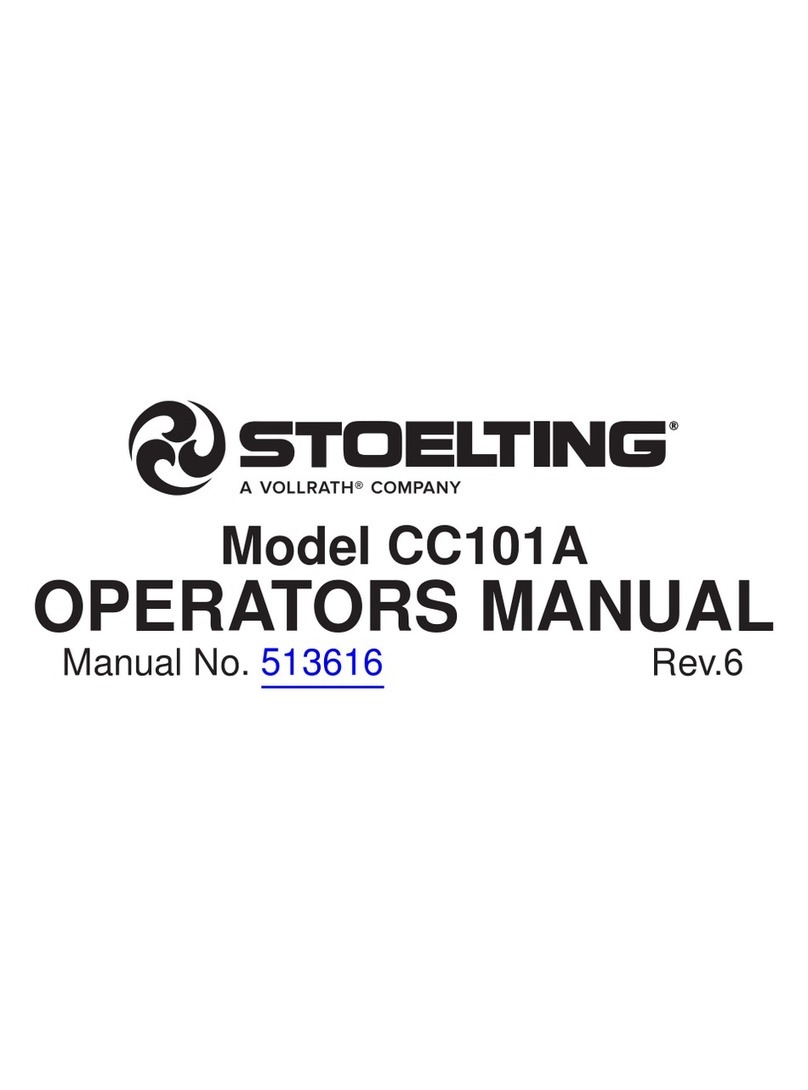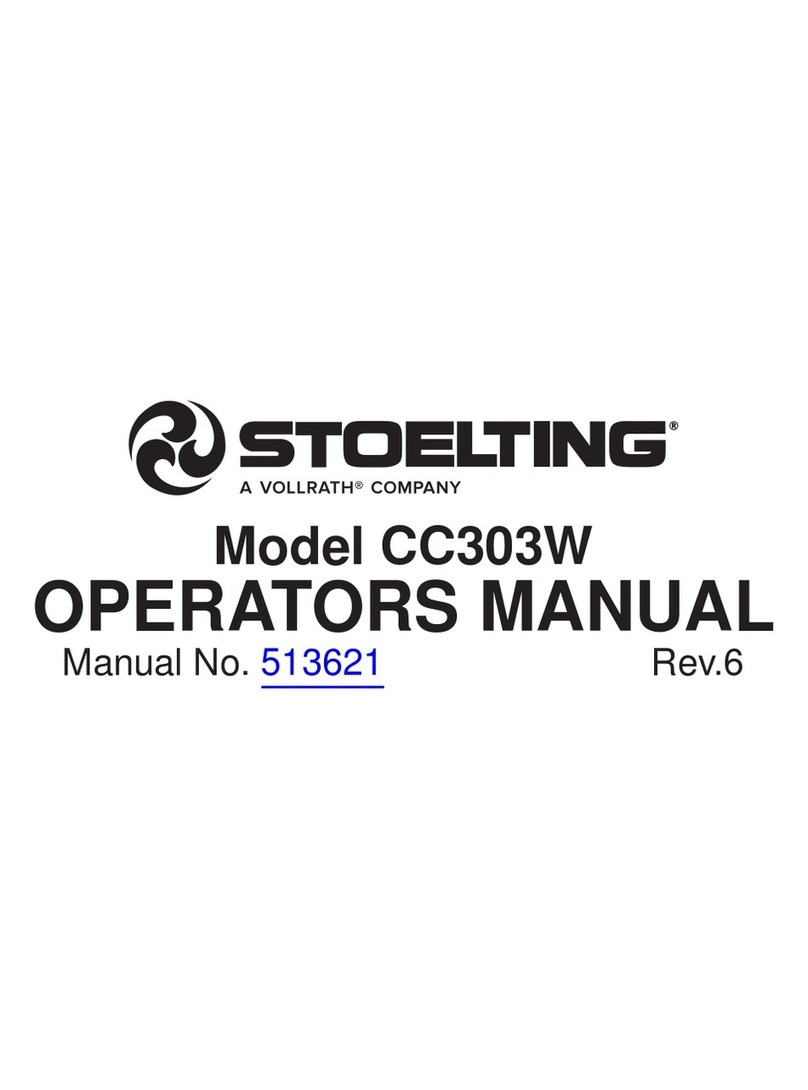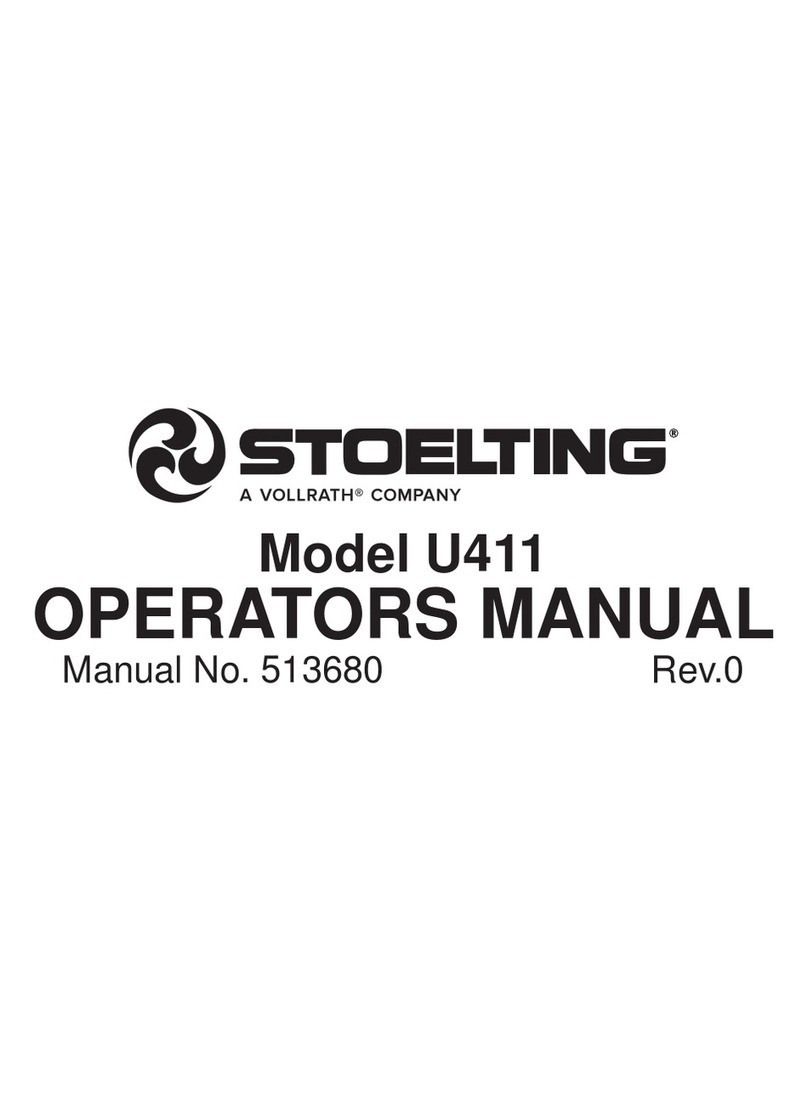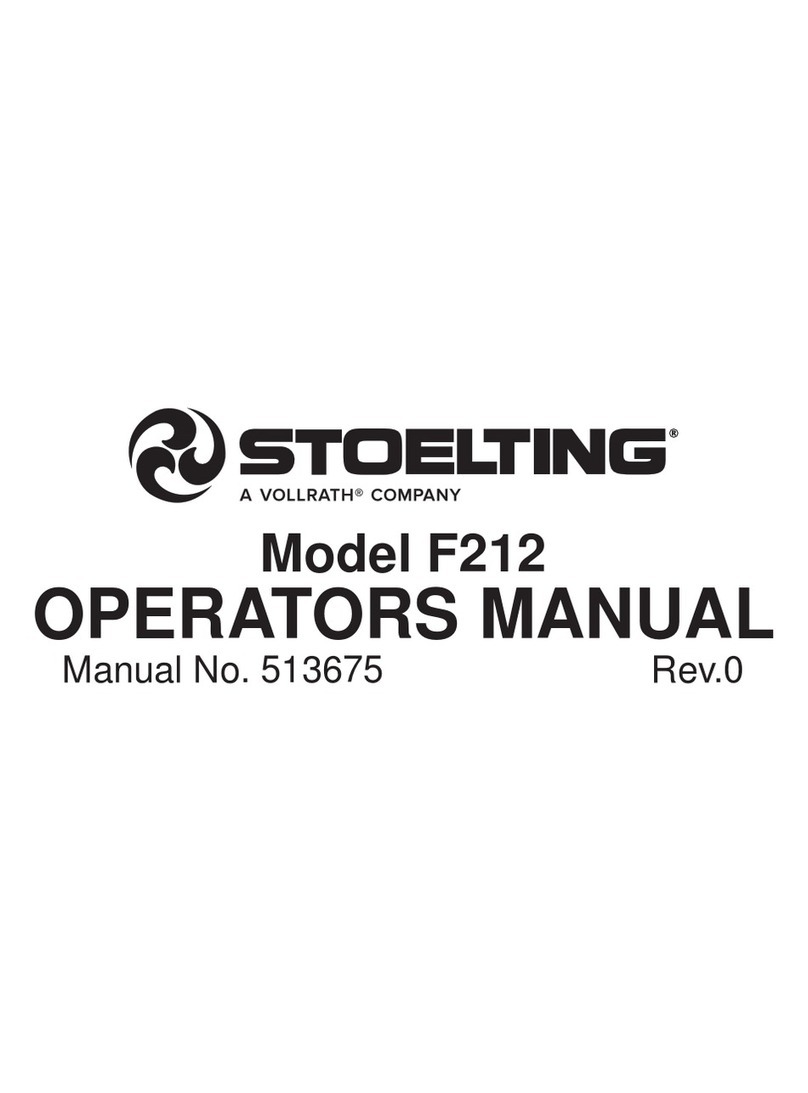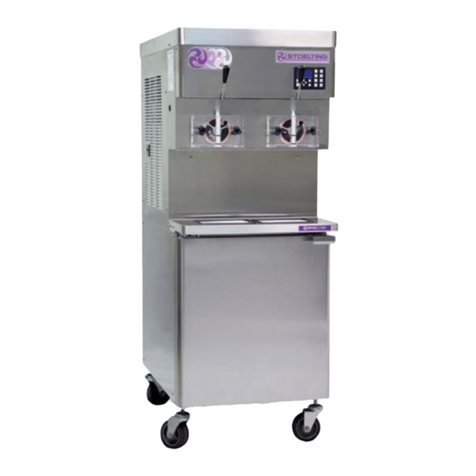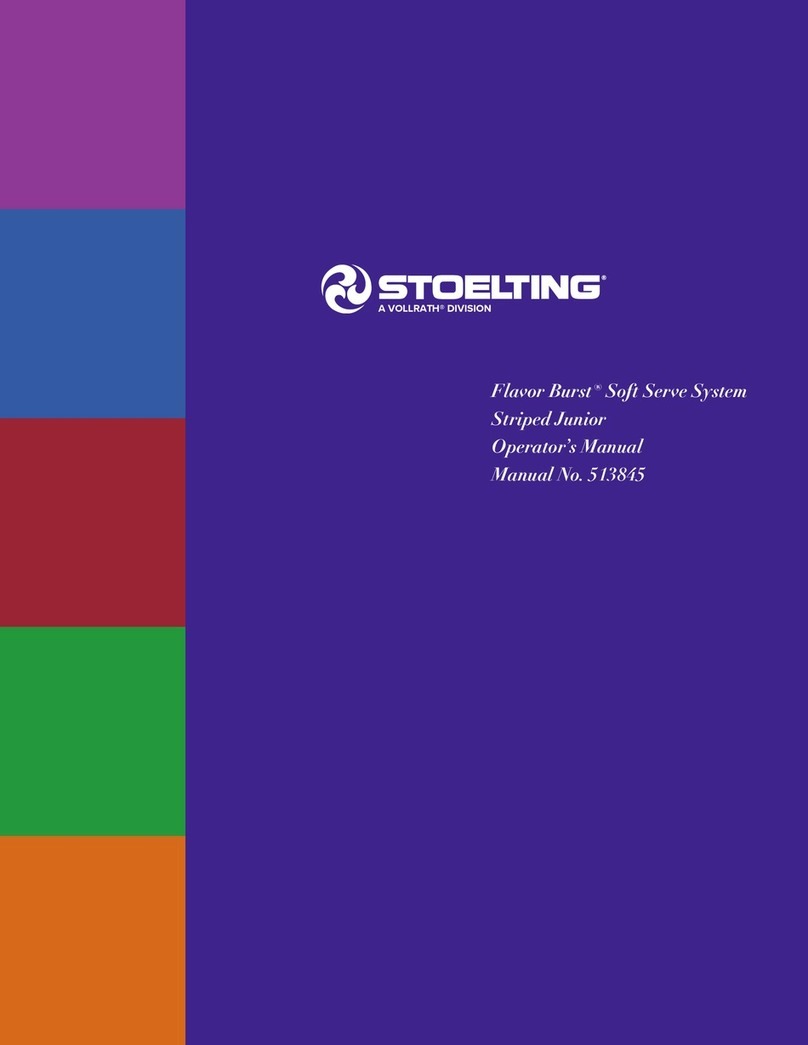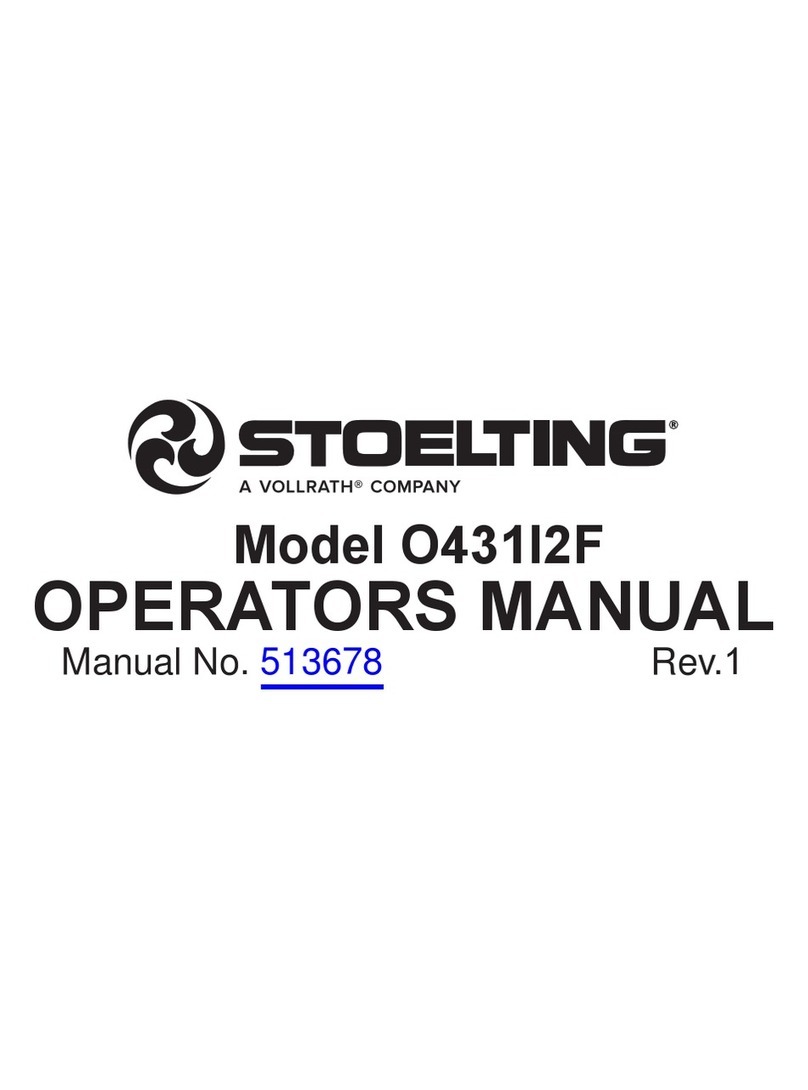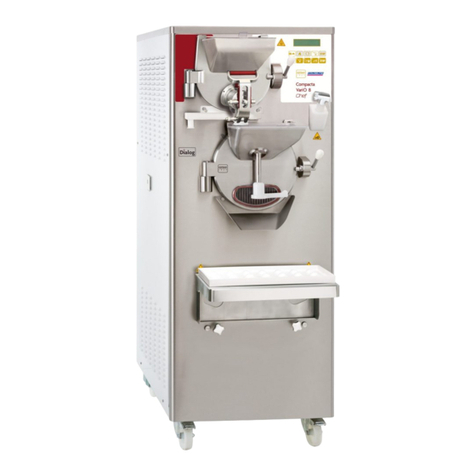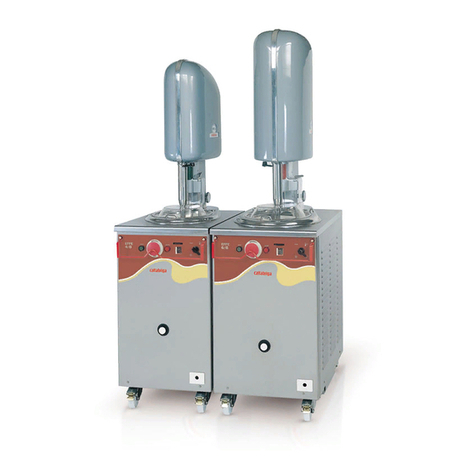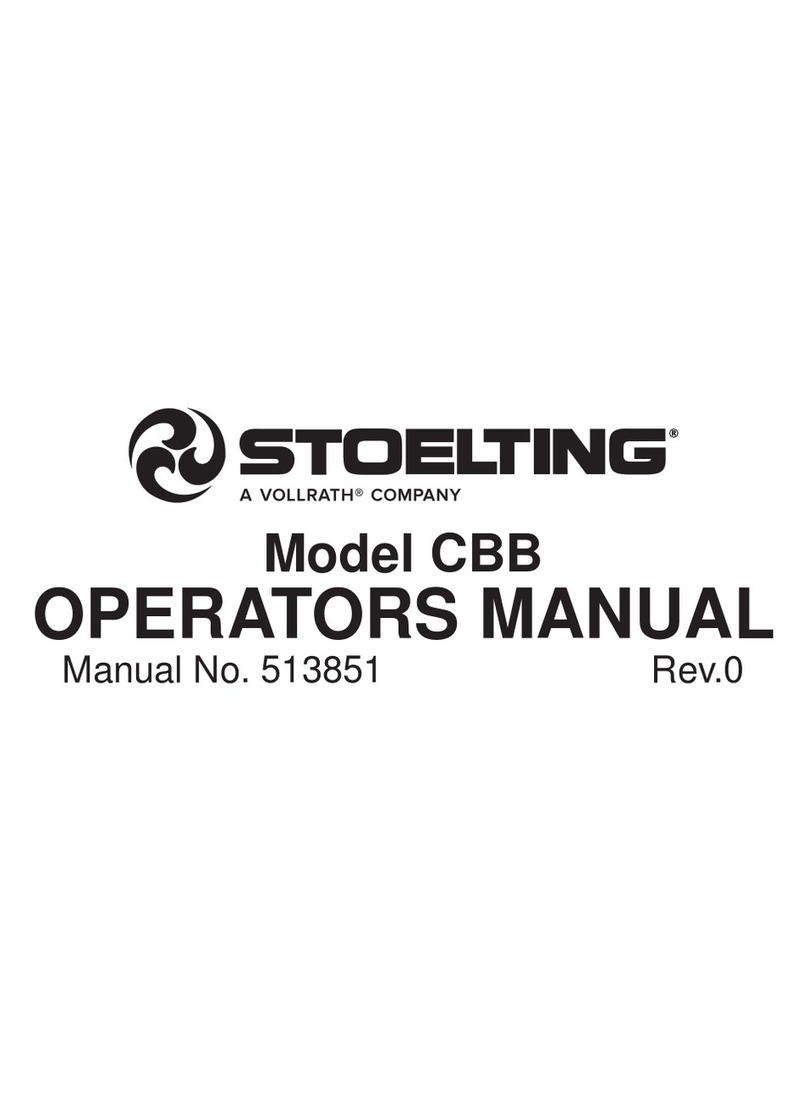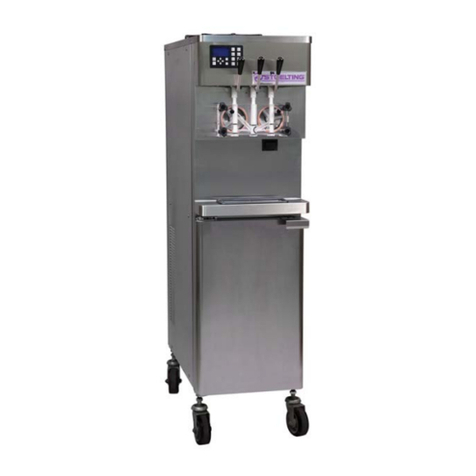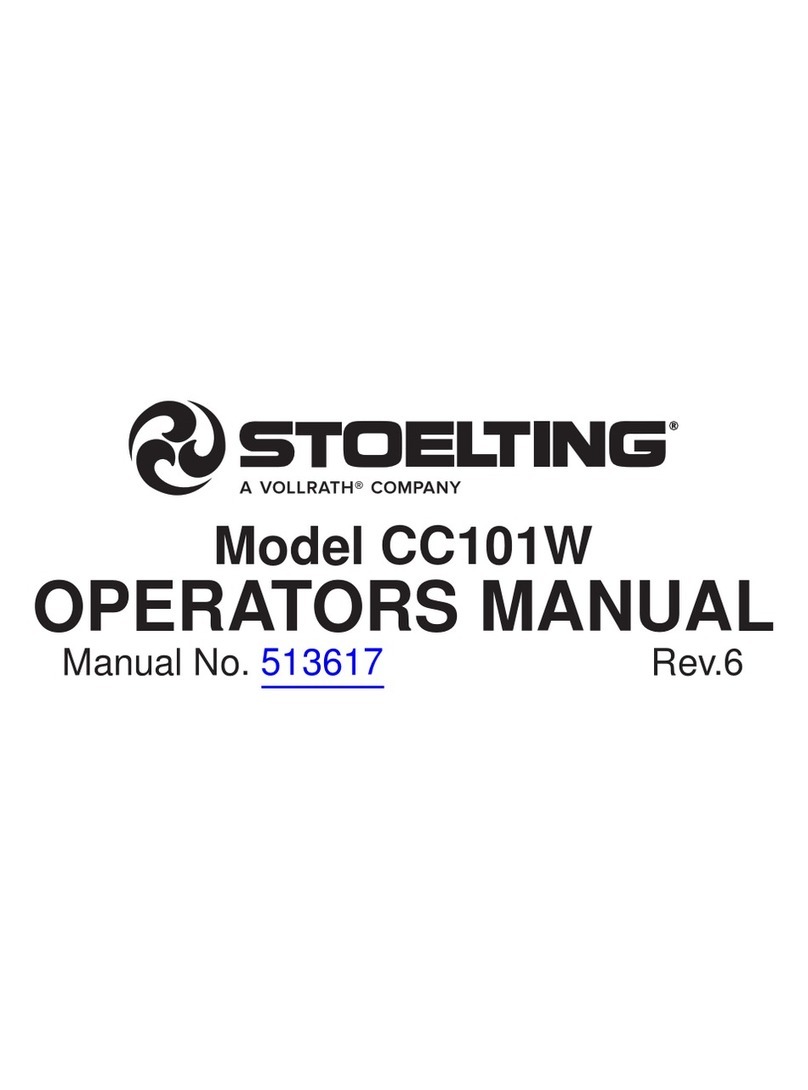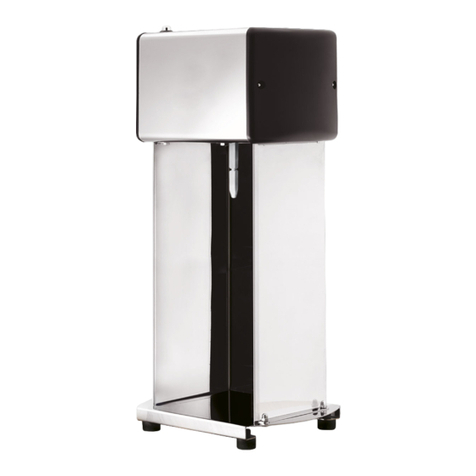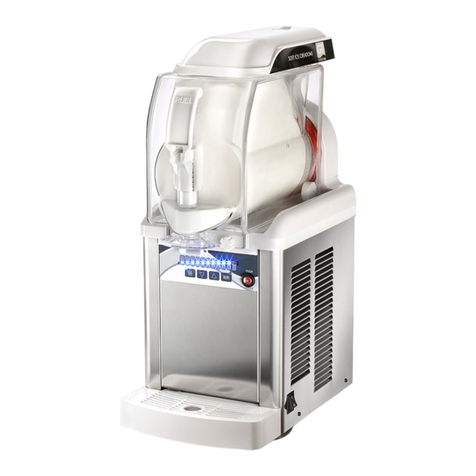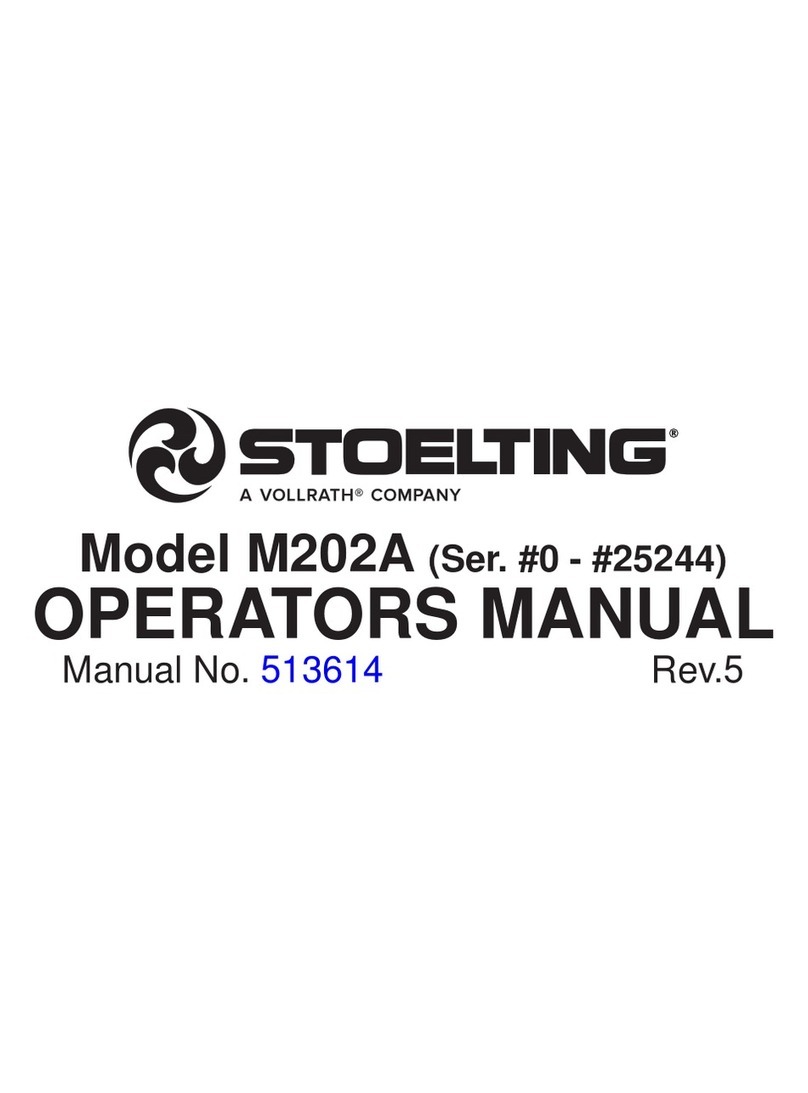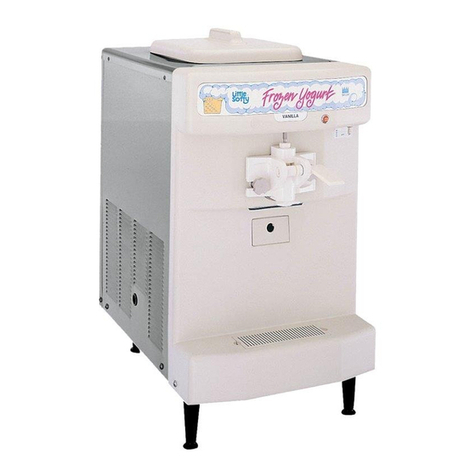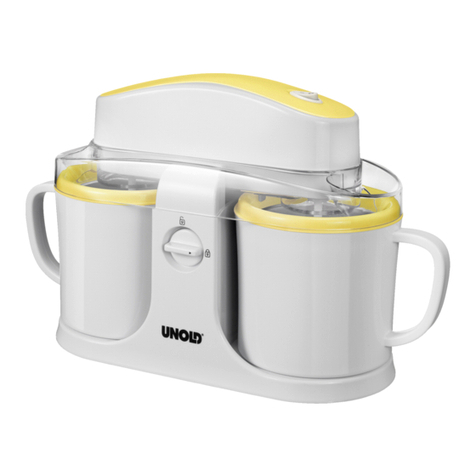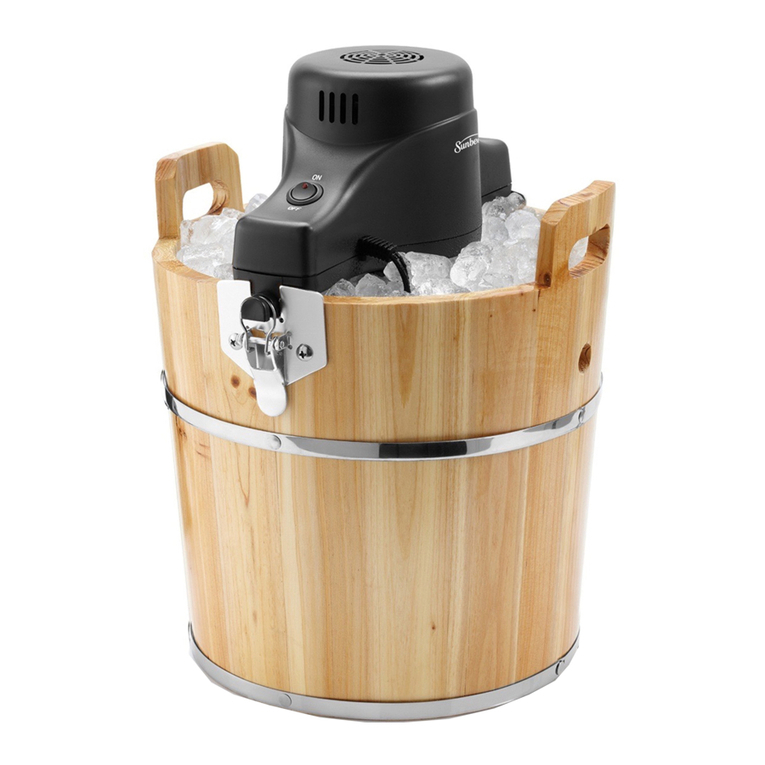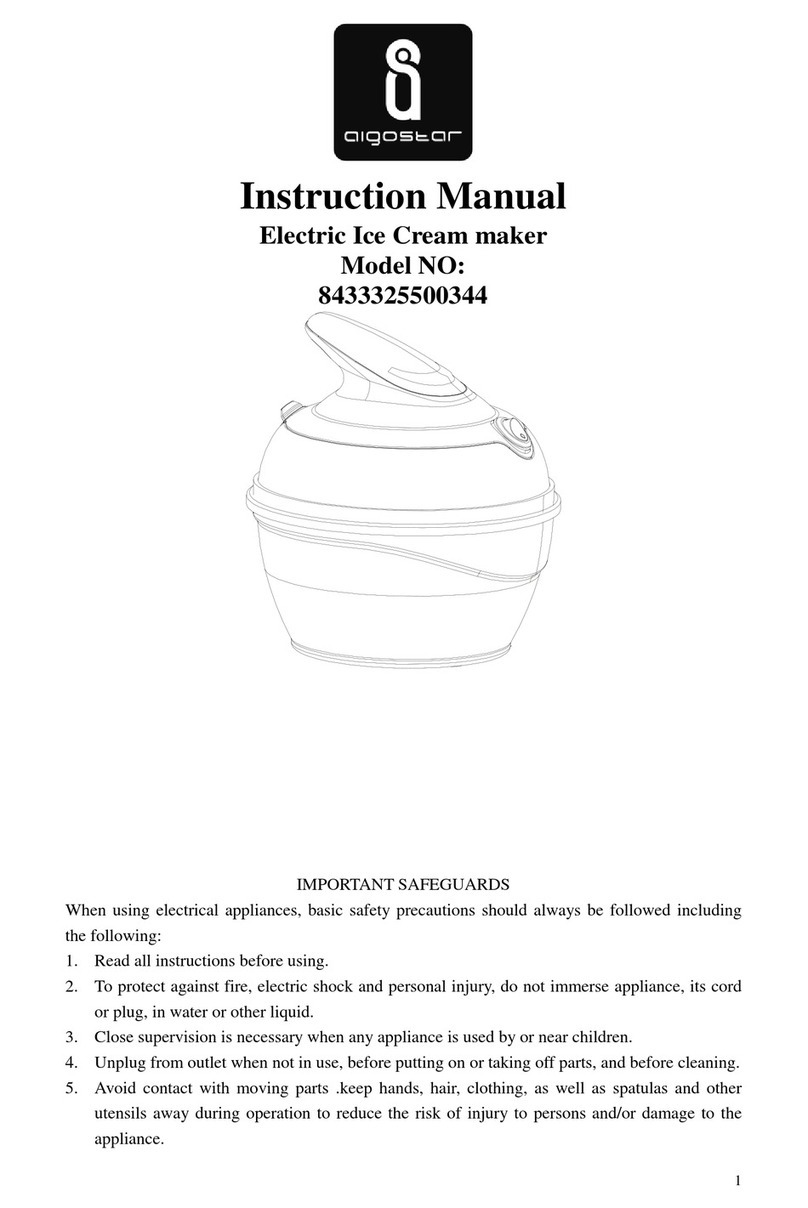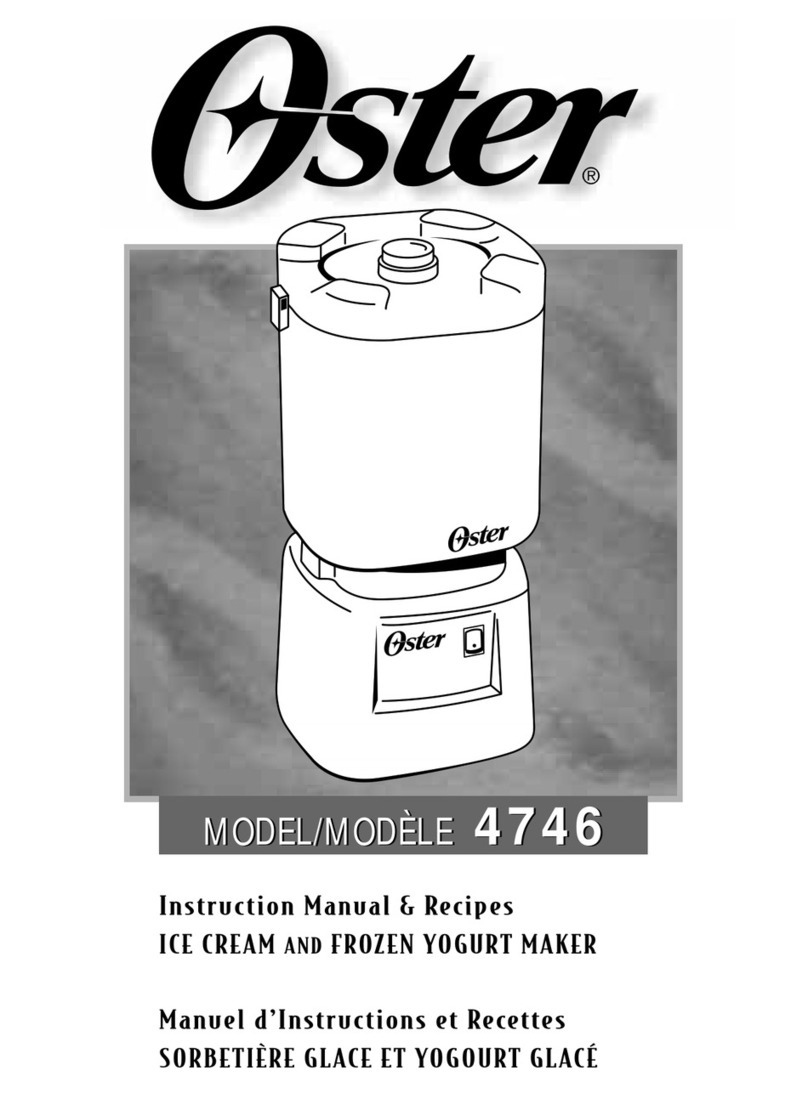4
1.3 MODES OF NORMAL OPERATION
Following are details of the operational modes of the
IntelliTeccontrol.
NOTE:
The preset amounts, times, and temperatures listed
below are references to actual settings on the
IntelliTec control. Refer to Table 1-1 on page 7 for
details on each setting.
A. INITIAL STATUS
When the Main Freezer Power and Freezing Cylinder
switches are placed in the ON position, the machine will
start in the “Sleep 1 Mode". The display will read "Sleep 1
Mode". The control will eventually move into the “Sleep 2”
mode if the PUSH TO FREEZE button is not pressed.
Whenthe PUSHTO FREEZEbutton ispressed thecontrol
will move to the “Serve Mode”.
B. SERVE MODE
Whenthe PUSHTOFREEZE buttonis pressed ora spigot
handleis pulled,the “Serve Mode”begins. Thedrive motor
starts, and after a 3 second delay, the compressor starts.
Thedisplay reads“FREEZING” onthe toplineand abar on
the bottom line increases with product consistency. A
toroid on the IntelliTec control senses increasing drive
motor amperage as the product comes to consistency in
thefreezing cylinder.Whenthe controlsenses the product
is at 75% of consistency, the display will read "SERVE",
the amber LED will go out, and the green LED will flash. At
this time, product can be served from the machine. The
drive motor and compressor will continue to run until the
toroidreadsapresetvalue (CutOutamps). Whenthetoroid
readsthe CutOutamps onthe drivemotor, thecompressor
turns off and the green LED will remain lit. After a 3 second
delay,the drive motor turnsoff. The product inthefreezing
cylinder is now at serving temperature and consistency.
After product is at consistency, the IntelliTec control
continuously monitors refrigerant temperature through a
thermistor mounted on the side of the freezing cylinder.
When the temperature increases to a preset amount (Cut
In T), a 3-second drive motor pre-stir analyzes product
consistency. The pre-stir check is also performed each
timethespigot handleisopened. Thischeckpreventsover-
freezing of product, especially during frequent, small vol-
ume draws. If the product requires a freezing cycle, the
control will start the cycle.
During the “Serve Mode”, a stir cycle starts. This cycle is
independent of the freezing cycle and is based on preset
times(Stir On and StirOff). The stir cycleprevents product
separation.If a freezing cycleisinitiated, the timer isreset.
In addition to the "Serve Mode" freezing cycle, there is a
freezing cycle based on a preset time (DftOffTime). If this
time is attained without a freezing cycle, the control will
automatically start a freezing cycle.
The machine will remain in “Serve Mode” until the cycle
count setting is attained. The cycle count is the number of
active freezing cycles and is based on a preset value
(Cycles). Once the cycle count has been reached without
user interruption, the control will move into the "Standby
Mode".
If the PUSH TO FREEZE button is pressed or a spigot
handleis pulled,thecycle countis reset andthe controlwill
moveto thebeginning ofthe "ServeMode". Refer toFigure
1-3 for a graphical representation of the "Serve Mode".
C. STANDBY MODE
Ifno producthasbeen drawnfrom thespigot andthe preset
number of active freezing cycles is met, the control moves
into the “Standby Mode”. In "Standby Mode", the freezing
cycleisbasedonpresettimers(On TimeandOff Time),and
prevents ice crystals from building up in the product.
Becausethe productremains partiallyfrozen,itcanquickly
returntoservableconsistencywhenthePUSH TOFREEZE
button is pressed.
During “Standby Mode”, the stir cycle runs. This cycle is
based on preset, timed intervals (Stir On and Stir Off) and
preventsproduct separation.
The"Standby Mode"maintains productquality duringslow
times, while minimizing reactivation time. This mode lasts
for a preset time (Stb Time). Once this time has been
reached without user interruption, the control moves into
Figure 1-3 Serve Mode
Figure 1-4 Standby Mode


